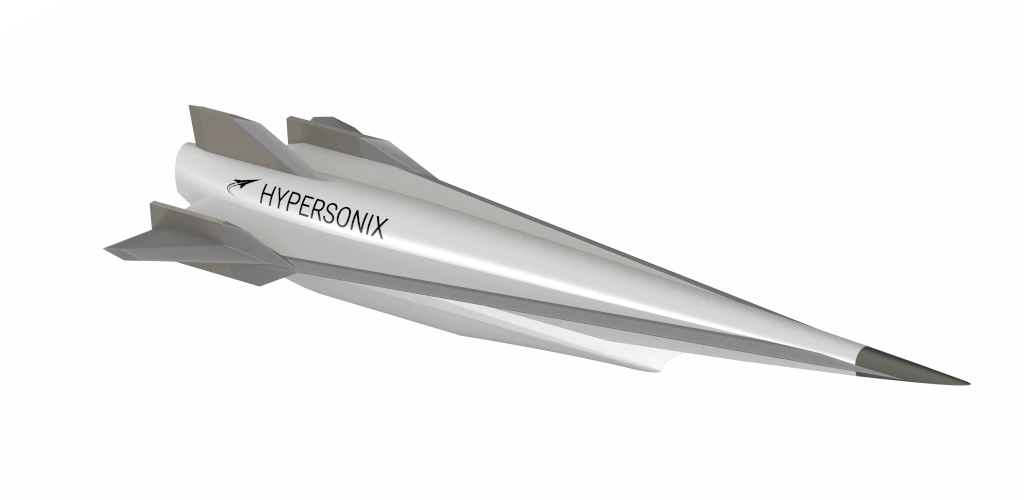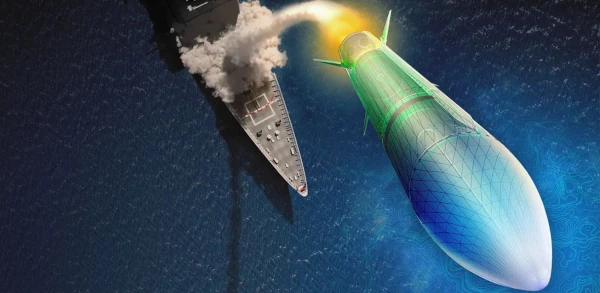Defending against hypersonic missiles is strategically necessary, technologically possible, and fiscally affordable, but it will not be easy.
Its realisation will require different approaches and new ways of thinking from those employed for legacy ballistic and cruise missile defence missions. Naval Forces online publishes here an excerpt from an in-depth report, entitled “Complex Air Defense – Countering the Hypersonic Missile Threat”, which was released on behalf of the Missile Defense Project by the Center for Strategic and International Studies (CSIS) in February 2022.
What’s the threat?
Hypersonic weapons combine the speed and range of ballistic missiles with the low-altitude and manoeuvrable flight profile of a cruise missile. While traditional defences can handle these challenges individually, their combination will require new capabilities, operational concepts and defence design. The same characteristics that make hypersonic missiles attractive may also hold the key to defeating them. Instead of thinking about hypersonic defence as an adjunct to the legacy ballistic missile defence problem, it might be better understood as a form of complex air defence.
Decades ago, the United States put the world on notice of its intent to field ballistic missile defences with a particular focus on intercepting predictable targets outside the atmosphere. Since then, the missile threat spectrum has broadened, becoming more endoatmospheric and more manoeuvrable. In the 2000s, Russia and China developed a variety of unmanned aerial systems, advanced cruise missiles, hypersonic glide weapons and increasingly sophisticated ballistic missiles. The characteristics of these weapons reduce defensive system coverage, force defenders to look multiple directions at once, and require more agile interceptors. Since 2018, Russia has tested at least four new hypersonic or high-speed weapons, inducting into service its long-range Avangard hypersonic glide vehicle and Kinzhal air-launched ballistic missile. China, meanwhile, has tested or fielded several types of hypersonic weapons and has outpaced the United States in graduating hypersonic-specialised engineers, publishing open scientific papers and constructing hypersonic wind tunnels.
Doing a lot: China and Russia
Chinese and Russian investments in advanced missile capabilities are part of what the March 2021 Interim National Security Strategic Guidance identified as “efforts meant to check US strengths and prevent us from defending our interests and allies around the world.” Hypersonic defence is necessary to disrupt these efforts, defend US territory, and protect forward-deployed forces and the defence posture they support. Effective deterrence leverages both the threat of punishment and a credible capability to deny an attack. A mix of active and passive defence measures will raise the threshold for aggression, increase uncertainty in an adversary’s decision calculus and impose developmental costs on adversaries. Effective defensive capabilities buy time to bring other military, diplomatic and economic responses to bear and mitigate policy and operational challenges associated with attacking missile launchers in a crisis. Developing hypersonic defences need not and should not happen in a vacuum or as a new standalone stovepipe. Hypersonic defence can leverage ongoing investments in both ballistic and cruise missile defences and hypersonic strike, all of which draw upon a similar industrial base and leverage similar sensors and networks.
Urgent demand for hypersonic defence
The characteristics of hypersonic missiles may seem novel, but they are in fact the ‘harbinger’ of a new age of missile warfare. New ballistic missiles are being flown with lower and more heavily shaped trajectories. New cruise missiles sustain higher speeds and are becoming more difficult to detect. Future threats will include missile-drone combinations, spaceplanes, aeroballistic missiles and other hybrids that strain simple categorisation. Hypersonic missiles thus do not represent a ‘boutique’ problem. They exemplify a broader evolution in the missile threat – one which demands changes to the broader missile defence paradigm.
The 2019 Missile Defense Review noted that “the scale and urgency of change required to restore
conventional and missile defense overmatch should not be underestimated.” The scale and urgency required here touches virtually every aspect of missile defence: sensors, interceptors, defense design, doctrine and policy. The problem of complex air and missile defence is not about some still-emerging future threat. It is a present imperative to contend with hypersonic weapons already deployed and ready for use, and others soon to come. US defence officials have long expressed the need to convert the major defence acquisition programme, called the Ballistic Missile Defense System, into a Missile Defense System to contend with a threat spectrum no longer defined by ballistic missiles. Now the time has come to do so.
An attribute, not a thing
_Beginning around Mach 5, flying objects encounter thermal and aerodynamic phenomena distinct from those encountered in supersonic and exoatmospheric flight. These phenomena define the hypersonic flight regime.
_The combined characteristics of high speed, lower altitude and manoeuvrability make it difficult to predict the trajectories of hypersonic weapons, especially with terrestrial sensors. Although ballistic missiles, cruise missiles and certain aircraft share some of these characteristics, their combination presents a qualitatively different problem.
_While hypersonic weapons are normally divided into two categories – hypersonic glide vehicles
and hypersonic cruise missiles – this bifurcation does not reflect the actual and potential diversity
of the hypersonic missile threat spectrum.
_Hypersonic flight is by definition atmospheric flight. As such, hypersonic defence might be better understood as a complex form of air defence.
_The characteristic challenges of hypersonic flight raise intriguing possibilities for a defender.
Defence is possible
Hypersonic missile defence is possible. Realizing it, however, requires rethinking existing defence designs and a willingness to approach the problem differently. Targeting the specific characteristics of hypersonic flight can break the problem into manageable pieces, favorably affect the offense-defence cost curve and make the active defence challenge more tractable. Hypersonic weapons possess limitations that ballistic and cruise missiles do not. Besides
the aforementioned design challenges, it is significantly more difficult to deploy decoys and countermeasures within the harsh hypersonic environment. Without the need to discriminate warheads from other objects in the cold vacuum of space, hypersonic defence dispenses with one of the most vexing challenges of ballistic missile defence. Hypersonic weapons, being encumbered by aerodynamic drag, may possess longer flight times than ballistic missiles traversing the same distance. Finally, while hypersonic, subsonic and supersonic cruise missiles can manoeuvre, hypersonic weapons may present brighter infrared (IR) signatures, fly at higher, more detectable altitudes, and may not manoeuvre as frequently or sharply without losses in performance.

Characteristic challenges of hypersonic flight raise intriguing possibilities for a defender
The characteristic challenges of hypersonic flight raise intriguing possibilities for a defender. By definition, hypersonic gliders expend energy while performing manoeuvres. The cost of those actions can be exploited by a defense design that encourages manoeuvres early and often. Moreover, the severe conditions of hypersonic flight – the risk of boundary layer transition, the need for shock wave management – create vulnerabilities that different kill mechanisms can exploit. Hypersonic weapons may be disrupted by smaller impacts or perturbations to their structure or surrounding airflow.
Each of the features that give hypersonic weapons an advantage comes with a cost. Extended flight through the atmosphere may expose them to new failure modes. Their ability to manoeuvre comes at the cost of expending energy and range. Just as ballistic missile defence was oriented around the predictability of a ballistic trajectory, so too can hypersonic defence be tailored to the vulnerabilities of the hypersonic flight regime. “Hit-to-kill” may come to mean something different for defeating hypersonic airframes than it does for ballistic reentry vehicles.
The difficulty of designing and manufacturing hypersonic systems presents yet another vulnerability. Defence architectures that employ multiple defeat mechanisms – kinetic effectors, electronic warfare (EW) and directed-energy systems of various classes and types – would create overlapping headaches for hypersonic weapon designers, who must optimise their designs against a greater variety of effects. Weapons designed with tight performance margins are vulnerable to marginal changes in a defence system’s characteristics. The need to overcome such uncertainties might force adversaries to embrace more conservative, less capable weapon designs. These dynamics in turn affect the cost of developing hypersonic weapons and the offense-defence relationship more broadly. A hypersonic defence design that exploits these “tight tolerances [and]
unique sensitivities that hypersonic weapons must overcome” would impose costs on adversaries. In other words, the development and fielding of hypersonic defenses could stress an adversary’s design cadence.
To be clear, converting the Ballistic Missile Defense System (BMDS) into the Missile Defense System (MDS) will require considerable architectural and cultural change. The “scale and urgency of change required” should not be underestimated. The same degree of reliance upon persistent and dedicated assets may not be available for hypersonic defense as it has for rogue state ballistic missile defence. The use of distributed and elevated sensor platforms and forward pickets might be applied to detect lower-flying threats, from hypersonic to subsonic. A different approach to persistence and the employment of non-dedicated elements across the joint
force may also be required.
International cooperation and the industrial base
The realisation of hypersonic defence will also require an overhaul of the defence industrial base and international partnerships. While the US can draw from an existing ballistic missile defence industrial base for many investments, reforms to the hypersonic workforce, testing capabilities and manufacturing are needed to support further development. The US also continues to benefit from its allied and partner relationships in developing and deploying hypersonic systems. As America moves forward with fielding hypersonic systems, it should work with allies to ensure common standards for data transfer, basing, and other overlapping areas of interest.
Sunk costs from decades of ballistic missile defence experience and infrastructure can be leveraged for the development of hypersonic defenses. Requisite improvements in data transmission, battle management and sensing can draw upon the larger American workforce of information technology personnel. Many new capabilities, such as edge computing and low earth orbit (LEO) satellites, can leverage significant developments in the commercial sector. The potential for a proliferated LEO sensor architecture, for example, benefits from non-traditional sources of satellite launch and production that have significantly reduced costs. New developments in small satellite launch, spearheaded by the Department of Defense’s (DoD) rapid launch initiative, may also offer the potential for reconstituting orbital assets in conflict scenarios. Most critically, the missile defence enterprise can build upon commercial developments in satellite networking and edge computing that can reduce size and power requirements. Other industrial base challenges are unique to hypersonic applications.
Scaling up the production of carbon-carbon and other thermal protection materials – specifically in the large single pieces needed for hypersonic vehicles – remains an area of concern for offensive hypersonic systems. Limited supplies of carbon-carbon composites have already stymied foreign efforts to produce hypersonic glide vehicles at scale. The US maintains a significantly larger composites supplier base, but a ceiling on access to carbon-carbon could constrain the production of long-range interceptors or drive demand for alternative means of thermal protection. Work must continue to accumulate production expertise and expand composites production to support the anticipated spike in demand.
The hypersonic enterprise requires enhanced software tools for validating new designs. Research has focused on the development of computationally intensive, high-fidelity codes to simulate hypersonic phenomena, but industry lacks usable multiphysics simulation codes adapted to the cadence of practical weapons design. Computer modeling represents the future for hypersonic testing and validation, but the lack of sufficient wind tunnel testing facilities has stymied the development of new codes. The shortage of facilities to model surface chemical reactions, conduct material screening, verify thermal protection system design and support scramjet engine testing has bottlenecked the development of more advanced models.
Deepened cooperation with allies could help to mitigate these shortfalls. Past partnerships on hypersonic research such as with Australia have produced technical breakthroughs for offensive and defensive systems. In 2020, the US and Australia renewed their technical cooperation through the Southern Cross Integrated Flight Research Experiment (SCIFiRE), collaborating on hypersonic basic research and flight test activity. (1) Future cooperation with other allies could allow for similar leaps for hypersonic defence. Given the connectivity between strike and defence, it will be important to monitor interpretations of the Missile Technology Control Regime that could throttle international cooperation.
The utility of distributed force postures for area defence also points to the need for new political
arrangements with allies. The greater numbers of forward deployed elements may also increase the demand for expanded hosting agreements. To support these postures, the US could benefit from deeper sensor integration with allies. While the US and its allies have achieved some degree of integration through its European Phased Adaptive Approach and Japanese Aegis systems, the US must broker more comprehensive tracking data sharing agreements for hypersonic defence. In turn, the exchange of tracking data between allied militaries will require new statutory authority with consideration for operational security and foreign military sales concerns. The political challenges associated with forward basing underscores the necessity of procuring longer-range defences. Countering hypersonic weapons in the glide phase not only presents technical benefits but would increase time for decision-making and potentially reduce the number of overseas bases needed for wide-area coverage. Investments in mobile basing for both sensors and effectors – particularly using aircraft – could also present footprint benefits for US forward forces. Space-based sensor architectures would allow for even smaller footprints while maintaining greater sensor coverage.
Conclusion
Hypersonic defence will not be easy, but neither is it impossible. Hypersonic missiles are not ‘silver bullets’, and they are not unstoppable. By adopting a system-of-systems approach, fielding space sensors and improved interceptors, and employing other imaginative ways to target the unique characteristics of hypersonic flight, the problem of hypersonic defence will be recognizable as a complex but increasingly tractable form of air defence.
Tom Karako is a senior fellow with the International Security Program and the director of the Missile Defense Project at the Center for Strategic and International Studies (CSIS), where he arrived in 2014. His research focuses on national security, missile defense, nuclear deterrence, and public law. In 2010-2011, he was an American Political Science Association congressional fellow, working with the professional staff of the House Armed Services Committee and the Subcommittee on Strategic Forces on US strategic forces policy, nonproliferation and NATO. Dr. Karako is also currently a fellow with the Institute for Politics and Strategy of Carnegie Mellon University.
Masao Dahlgren is a research associate with the Missile Defense Project at the Center for Strategic and International Studies (CSIS), where he focuses on deterrence and emerging technologies. Prior to joining CSIS, he worked at the Middlebury Institute of International Studies and the U.S. Department of Justice. Masao graduated summa cum laude from American University with a BA in international studies.
Remarks:
(1) In March 2022, Hypersonix, together with the University of Southern Queensland, LSM Advanced Composites and Romar Engineering, was awarded a A$2.9 million (US$2.2 million) grant from the Australian government to develop the DART CMP airframe, a reusable hypersonic UAV that can travel up to speeds of Mach 12, powered by the SPARTAN hydrogen engine.

